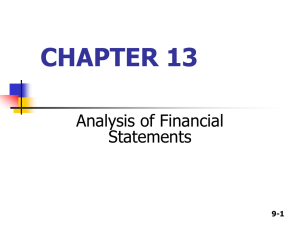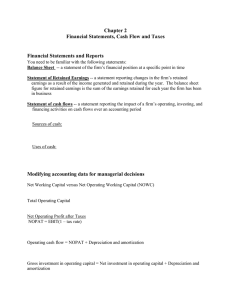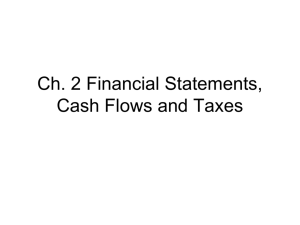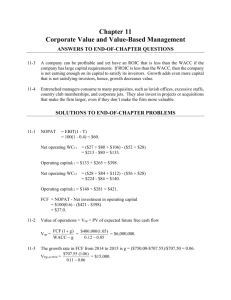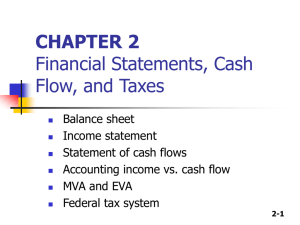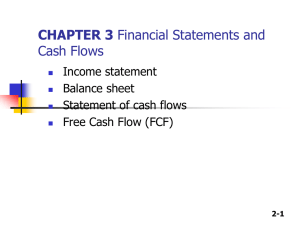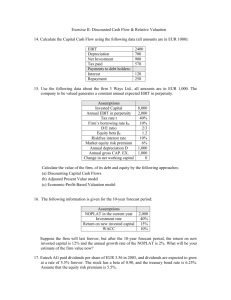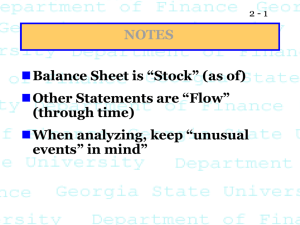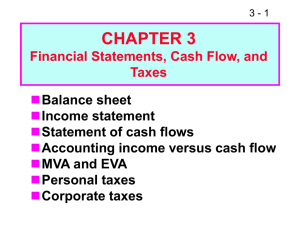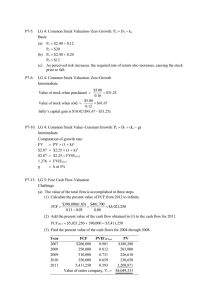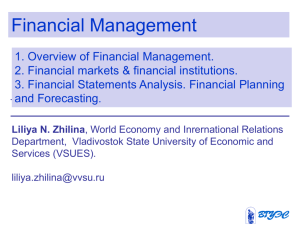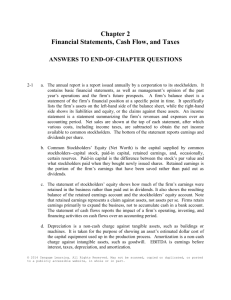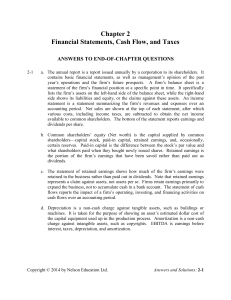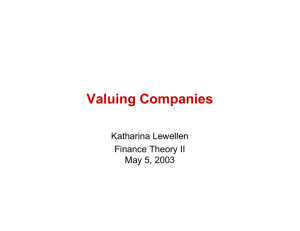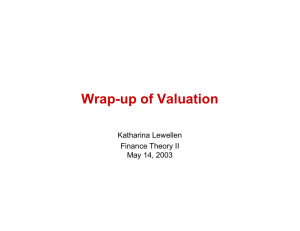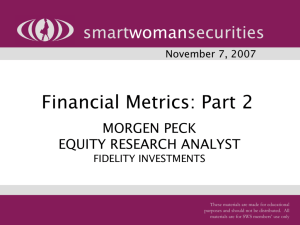Slides
advertisement
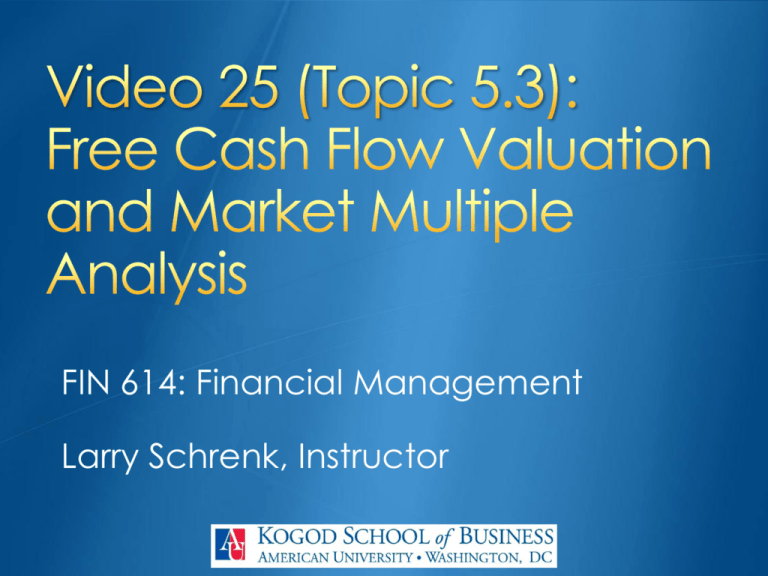
FIN 614: Financial Management Larry Schrenk, Instructor 1. What is Free Cash Flow (FCF)? 2. Calculating Free Cash Flow 3. Finding Firm, Equity and Share Prices 4. Market Multiple Analysis Cash Flow Available for Distribution to All Investors Valuation of Firm or Equity Application of Discounted Cash Flow Contrast with Dividends 1. Firm may not be Paying Dividends 2. Dividends at Discretion of Board 3. Dividends Uncertain 4. Cannot be Used for Internal Divisions Value of Firm = PV(FCF) r = Weighted Average Cost of Capital (WACC) FCF = NOPAT – Net Investment in Operating Capital NOPAT = EBIT(1 – tc) • NOPAT = Net Operating Profit after Taxes (but without Interest being Deducted) • EBIT = Earnings before Interest and Taxes • tc = Corporate Tax Rate • Net Investment in Operating Capital includes changes on Long Term assets and Working Capital A firm has an EBIT of 50 and its marginal tax rate is 40%. Its working capital was 10 last year and 12 this year, while its long term operating assets were 100 last year and 105 this year. What is its FCF? NOPAT = 50(1 – 0.40) = 30 Net Investment in Operating Capital = (105 + 12) - (100 + 10) = 8 FCF = 30 – 8 = 22 A firm has the following FCF’s and its WACC is 8%. What is its value of operations? 1 2 3 4+ 100 200 250 300 NOTE: Same methodology as mixed model for equity. 100 200 250 300 1 Vop 3439.39 3 2 3 (1.08) (1.08) (1.08) 0.08 1.08 The firm’s value of operations is $3,439.39, it has $500 in financial (non-operating) assets, $1,000 in debt, no preferred shares and has issued 300 shares of common stock. What is the value of the firm? = value of operations + value of non-operating assets = $3,439.39 + 500 = $3,939.39 What is the value of the firm’s equity? = Firm Value – (debt + preferred shares) = $3,939.39 - $1,000 = $2,939.39 What is the price per share? = Equity Value/Shares Outstanding = $2,939.39/300 = $9.80 Approach Similar Assets, Similar Prices Ratios Similar for Similar Firms Value as a Multiple of a Market Metric Comparison with Similar Firms Relative Valuation Most common valuation measure used on Wall Street Almost 85% of equity research reports are based on multiples and comparables Nearly 50% of all acquisition valuations are based on multiples Different companies can be compared through common metrics or ratios Ratios can often be abused or manipulated 1. Select a company to value. 2. Create a set of comparable companies. 3. For each comparable company, calculate ratios to compare to the selected company 1. Price/ Earnings 2. Price/ Sales 4. Use the multiples for the comparable companies to create a price. 1. Dell: P/E ratio = 21.63, price = $29.40, 1. P/E = Price per Share/Earnings per Share 2. Earnings per Share = Price per Share/(P/E) 3. Therefore E/S = $1.36 = 29.40/21.63 2. Find the average P/E ratio for comparable companies: 24.46 3. Multiple the Dell’s EPS by the industry average P/E ratio for a ‘relative’ price of $33.27 • 1.36 x 24.46 = 33.27 4. Implication: Dell’s price could be about $33.27 • if it kept the same E/S of $1.36, and • it’s P/E ratio increased to match its competition 5. Dell is slightly underpriced on a P/E basis when compared to its competition FIN 614: Financial Management Larry Schrenk, Instructor
